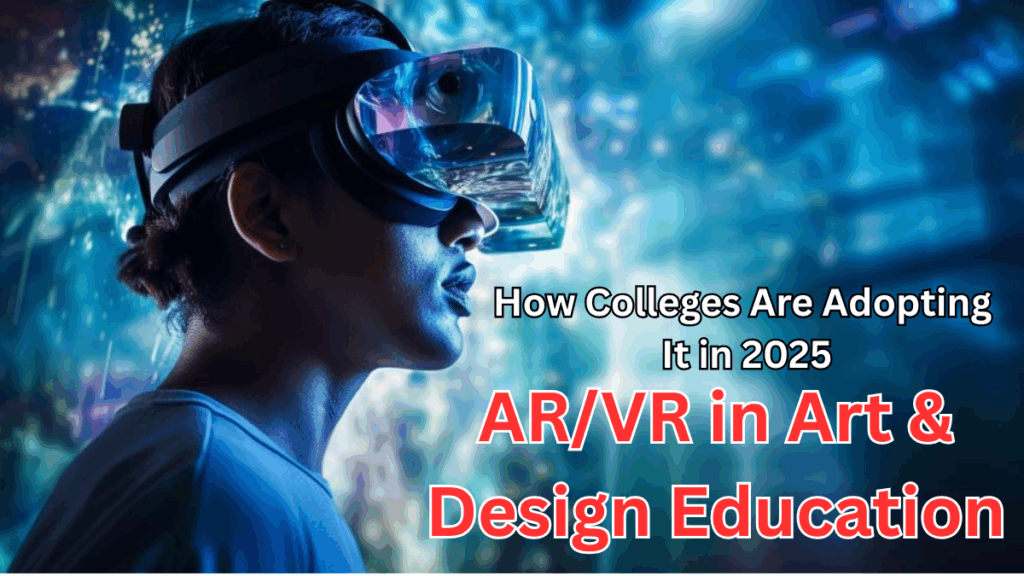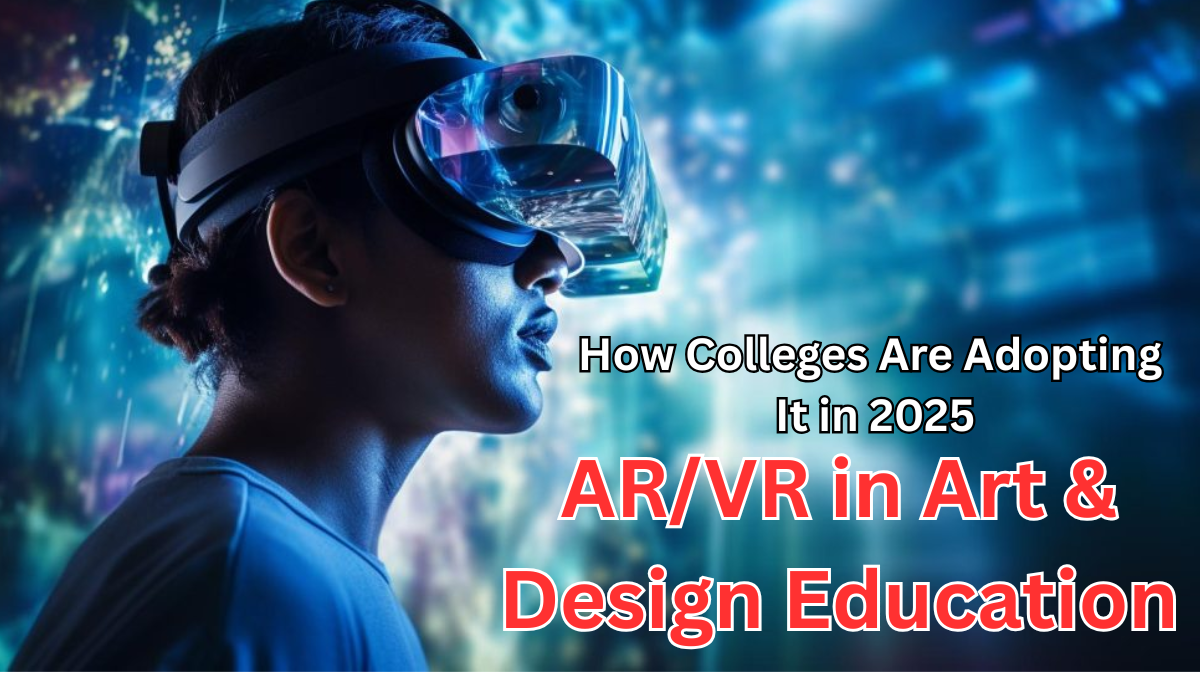Art and design education is evolving at an unprecedented pace. In 2025, AR/VR in art education is becoming a cornerstone for colleges, offering students immersive experiences that were once unimaginable. These technologies are reshaping the way art is taught, learned, and experienced.

The Rise of AR/VR in Art Education 2025
Colleges worldwide are integrating AR/VR in art education 2025 into their curriculum to enhance creativity and practical learning. Virtual Reality and Augmented Reality allow students to:
-
Step inside 3D art installations
-
Interact with virtual sculptures and design models
-
Experiment with colors, textures, and lighting in real-time
-
Collaborate on digital canvases with peers from anywhere
This shift is not just about technology; it’s about preparing students for a future where digital and physical worlds coexist seamlessly.
How Colleges Are Using AR/VR for Art Design Courses
Virtual Reality, colleges, and art design courses are coming together to offer a more hands-on learning experience. Here’s how institutions are leveraging these tools:
| College Type | AR/VR Application | Benefits for Students |
|---|---|---|
| Fine Arts Colleges | Virtual galleries & interactive workshops | Enhance creativity, explore new mediums |
| Design Schools | 3D prototyping & immersive design labs | Faster learning, realistic design visualization |
| Architecture & Interior Design | AR walkthroughs of spaces | Understand spatial dynamics and scale |
| Animation & Multimedia | VR simulations for storytelling | Improved narrative and visual experience |
By adopting these methods, colleges are making art education more dynamic, collaborative, and future-ready.
Benefits of Integrating AR/VR in Art Design Courses
-
Immersive Learning: Students can explore artistic concepts in 360° virtual environments.
-
Enhanced Creativity: Experimentation without material limitations encourages bold ideas.
-
Global Collaboration: Work with peers across countries in shared virtual spaces.
-
Portfolio Development: Showcase interactive digital art in a professional format.
The result is a generation of artists who are tech-savvy and ready for a digital-first creative world.
Challenges Colleges Face
While the adoption of AR/VR in art education 2025 is exciting, colleges do face hurdles:
-
High costs of AR/VR equipment
-
Training faculty to effectively use immersive technologies
-
Ensuring accessibility for all students
-
Keeping up with rapidly changing software and hardware
Despite these challenges, the momentum is undeniable, and more colleges are finding innovative solutions.
Looking Ahead: The Future of AR/VR in Art Education
By 2025, AR/VR is not just a supplement but a central component of art design courses. We can expect:
-
Increased collaborations between tech companies and colleges
-
Hybrid learning models blending physical studios with virtual spaces
-
Greater focus on interdisciplinary courses combining art, design, and tech
-
Expansion of virtual exhibitions and online art marketplaces
Students entering these programs today will graduate with skills that align perfectly with the demands of modern creative industries.
FAQs
Q1: What is AR/VR in art education 2025?
It refers to the use of Augmented Reality and Virtual Reality technologies in art and design courses to create immersive learning experiences for students.
Q2: How are colleges using AR/VR in art design courses?
Colleges are integrating VR simulations, virtual galleries, 3D modeling, and collaborative digital projects to enhance practical learning and creativity.
Q3: What are the main benefits of AR/VR in art education?
Benefits include immersive learning, enhanced creativity, global collaboration, and interactive portfolio development for students.
Q4: Are there challenges in adopting AR/VR in colleges?
Yes, challenges include high costs, faculty training, accessibility issues, and keeping up with fast-changing technology.
Click here to learn more
